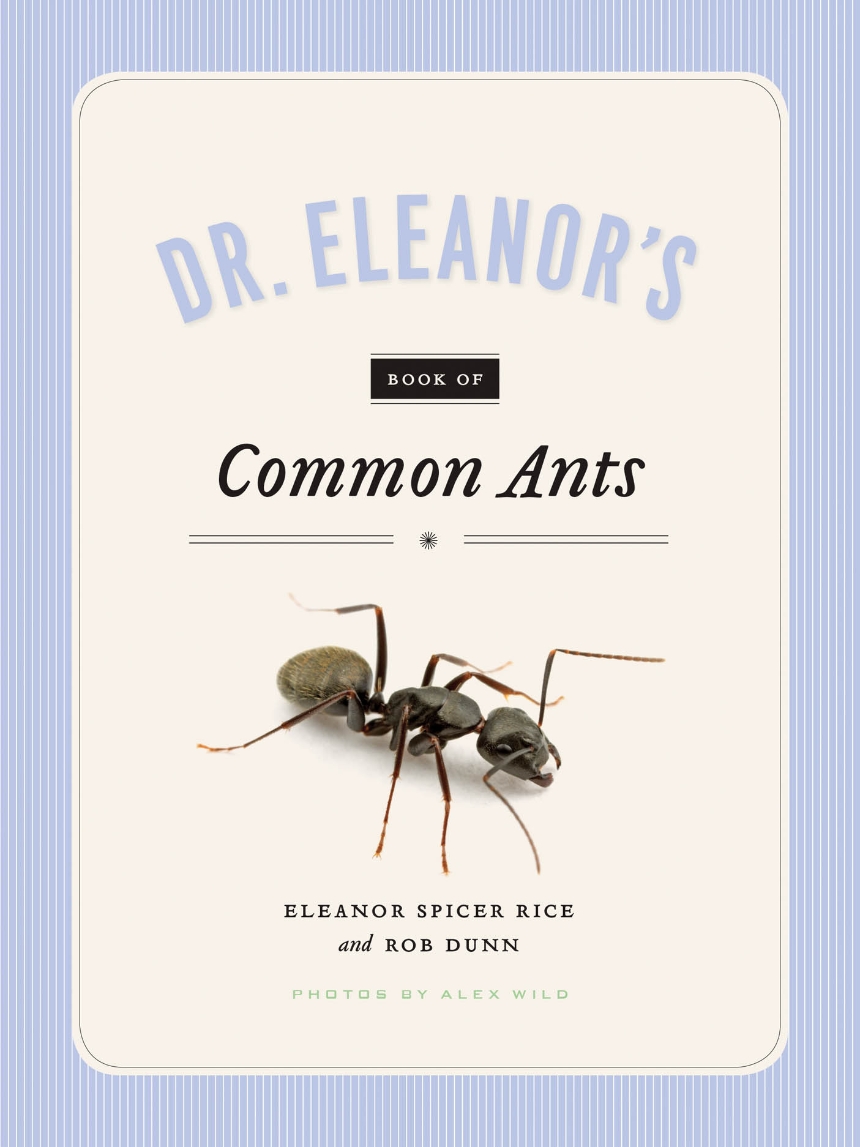Dr. Eleanor’s Book of Common Ants
Did you know that for every human on earth, there are about one million ants? They are among the longest-lived insects—with some ant queens passing the thirty-year mark—as well as some of the strongest. Fans of both the city and countryside alike, ants decompose dead wood, turn over soil (in some places more than earthworms), and even help plant forests by distributing seeds. But while fewer than thirty of the nearly one thousand ant species living in North America are true pests, we cringe when we see them marching across our kitchen floors.
No longer! In this witty, accessible, and beautifully illustrated guide, Eleanor Spicer Rice, Alex Wild, and Rob Dunn metamorphose creepy-crawly revulsion into myrmecological wonder. Emerging from Dunn’s ambitious citizen science project Your Wild Life (an initiative based at North Carolina State University), Dr. Eleanor’s Book of Common Ants provides an eye-opening entomological overview of the natural history of species most noted by project participants—and even offers tips on keeping ant farms in your home. Exploring species from the spreading red imported fire ant to the pavement ant, and featuring Wild’s stunning photography, this guide will be a tremendous resource for teachers, students, and scientists alike. But more than this, it will transform the way we perceive the environment around us by deepening our understanding of its littlest inhabitants, inspiring everyone to find their inner naturalist, get outside, and crawl across the dirt—magnifying glass in hand.
No longer! In this witty, accessible, and beautifully illustrated guide, Eleanor Spicer Rice, Alex Wild, and Rob Dunn metamorphose creepy-crawly revulsion into myrmecological wonder. Emerging from Dunn’s ambitious citizen science project Your Wild Life (an initiative based at North Carolina State University), Dr. Eleanor’s Book of Common Ants provides an eye-opening entomological overview of the natural history of species most noted by project participants—and even offers tips on keeping ant farms in your home. Exploring species from the spreading red imported fire ant to the pavement ant, and featuring Wild’s stunning photography, this guide will be a tremendous resource for teachers, students, and scientists alike. But more than this, it will transform the way we perceive the environment around us by deepening our understanding of its littlest inhabitants, inspiring everyone to find their inner naturalist, get outside, and crawl across the dirt—magnifying glass in hand.
96 pages | 96 color plates | 6 x 8 | © 2017
Biological Sciences: Behavioral Biology, Biology--Systematics, Conservation, Ecology, Natural History
Reviews
Table of Contents
Preface
IntroductionChapter 1: Carpenter Ant (Camponotus pennsylvanicus)
Chapter 2: Pavement Ant (Tetramorium sp.E)
Chapter 3: Odorous House Ant (Tapinoma sessile)
Chapter 4: Winter Ant (Prenolepis imparis)
Chapter 5: Asian Needle Ant (Brachyponera chinensis)
Chapter 6: Winnow Ant (Aphaenogaster rudis)
Chapter 7: Big Headed Ant (Pheidole spp.)
Chapter 8: Southern Fire Ant (Solenopsis xyloni)
Chapter 9: Little Black Ant (Monomorium minimum)
Chapter 10: Thief Ant (Solenopsis molesta)
Chapter 11: High Noon Ant (Forelius pruinosus)
Chapter 12: Lasius Ant (Lasius spp.)
Chapter 13: Field Ant (Formica spp.)
Chapter 14: Argentine Ant (Linepithema humile)
Chapter 15: Red Imported Fire Ant (Solenopsis invicta)
Chapter 16: Crazy Ant (Nylanderia spp.)
Chapter 17: Trap-jaw Ant (Strumigenys spp.)
Chapter 18: Acrobat Ant (Crematogaster spp.)
Chapter 19: Frequently Asked Questions
Chapter 20: How to Keep Ants at Home
Acknowledgments
Glossary
Glossary
Additional Resources
